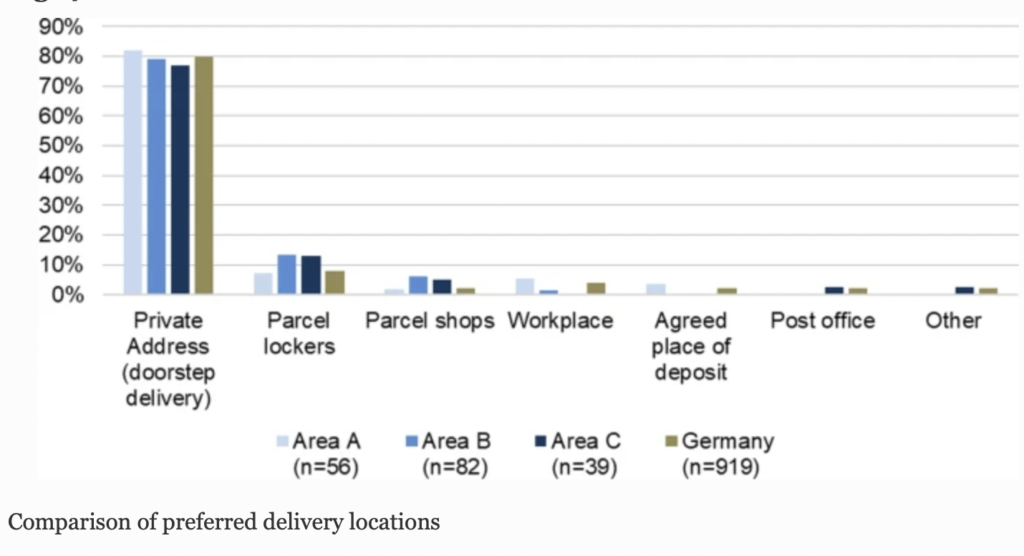Alternative solutions for sustainable last-mile parcel deliveries have been piloted and partially implemented in Europe in the past decade. However, these delivery concepts have mainly been considered in inner-city areas. There are a few examples of applying these concepts in peripheral urban areas, where new housing is being built to accommodate high population pressure.
However, it is unclear whether the delivery preferences of residents in new neighborhoods differ from those of the population average. Recent research conducted a case study in Berlin, examining two newly built neighborhoods and one existing residential area.
An expert survey showed that practitioners from last-mile logistics and planning in Germany found the following concepts relevant, especially for new construction areas: parcel lockers, concierge services, or cargo bike logistics.
Results from three survey waves of residents (N = 645) show that conventional doorstep delivery is preferred by 80% of the respondents. Nonetheless, there is a high willingness to use alternative delivery options, and respondents see benefits in climate-friendly delivery methods. This research also examines the willingness to pay for alternative parcel logistics concepts, which seems too low at the moment (at around €1 per shipment) to compensate for the additional costs of an operational change.

However, the results also show an increasing awareness of and preferences for new delivery concepts, thus providing practical implications for planners and logistics operators alike.
